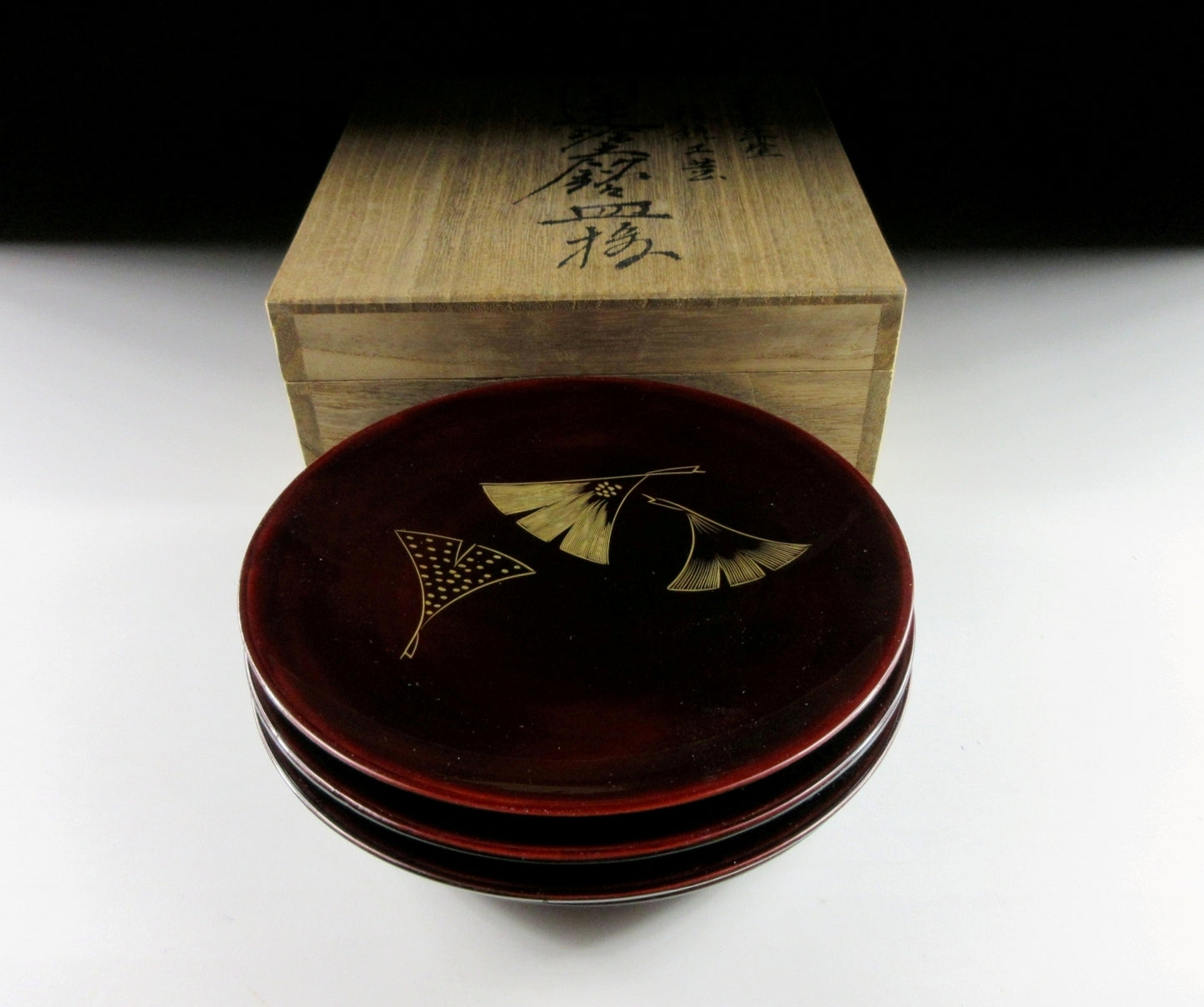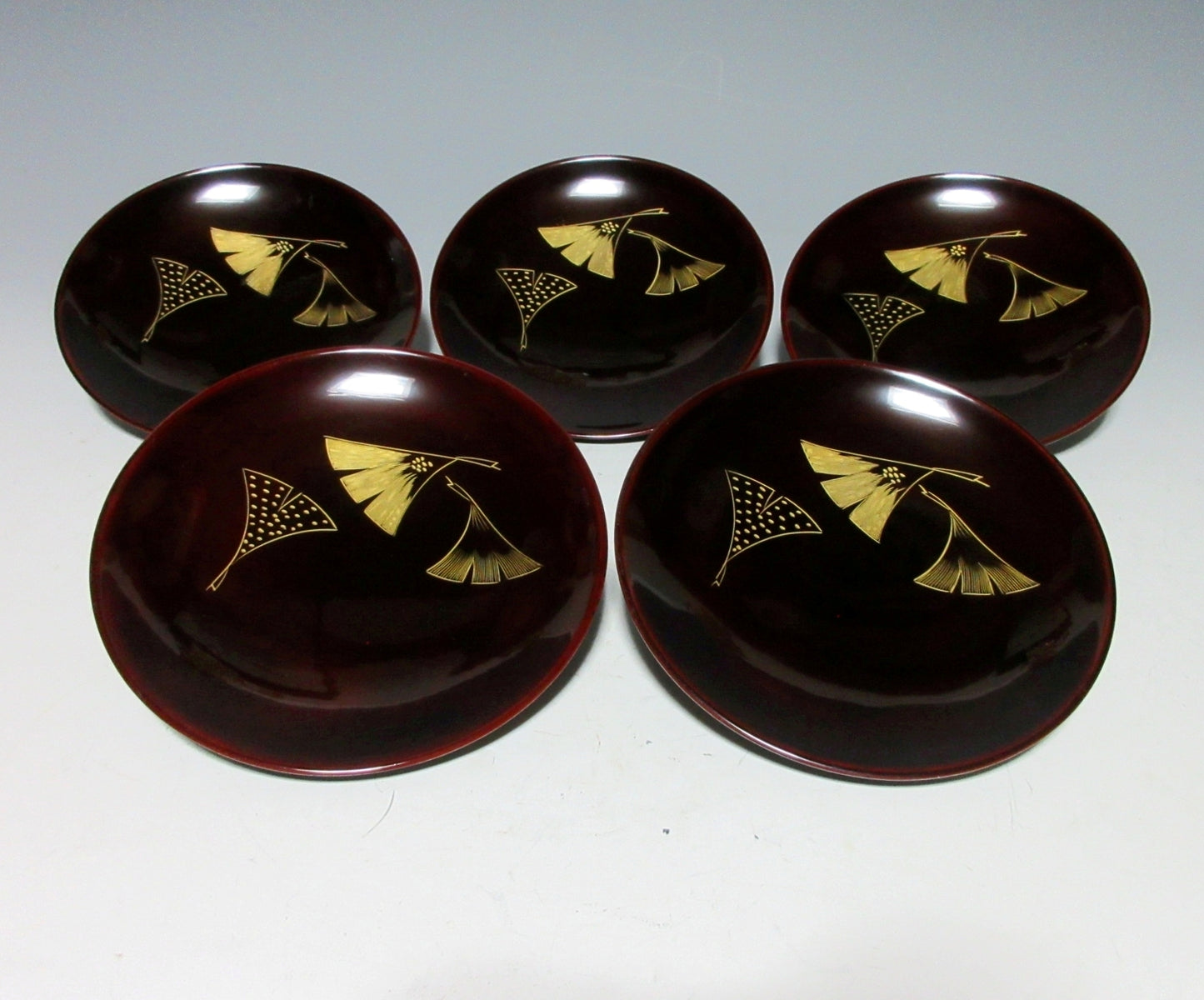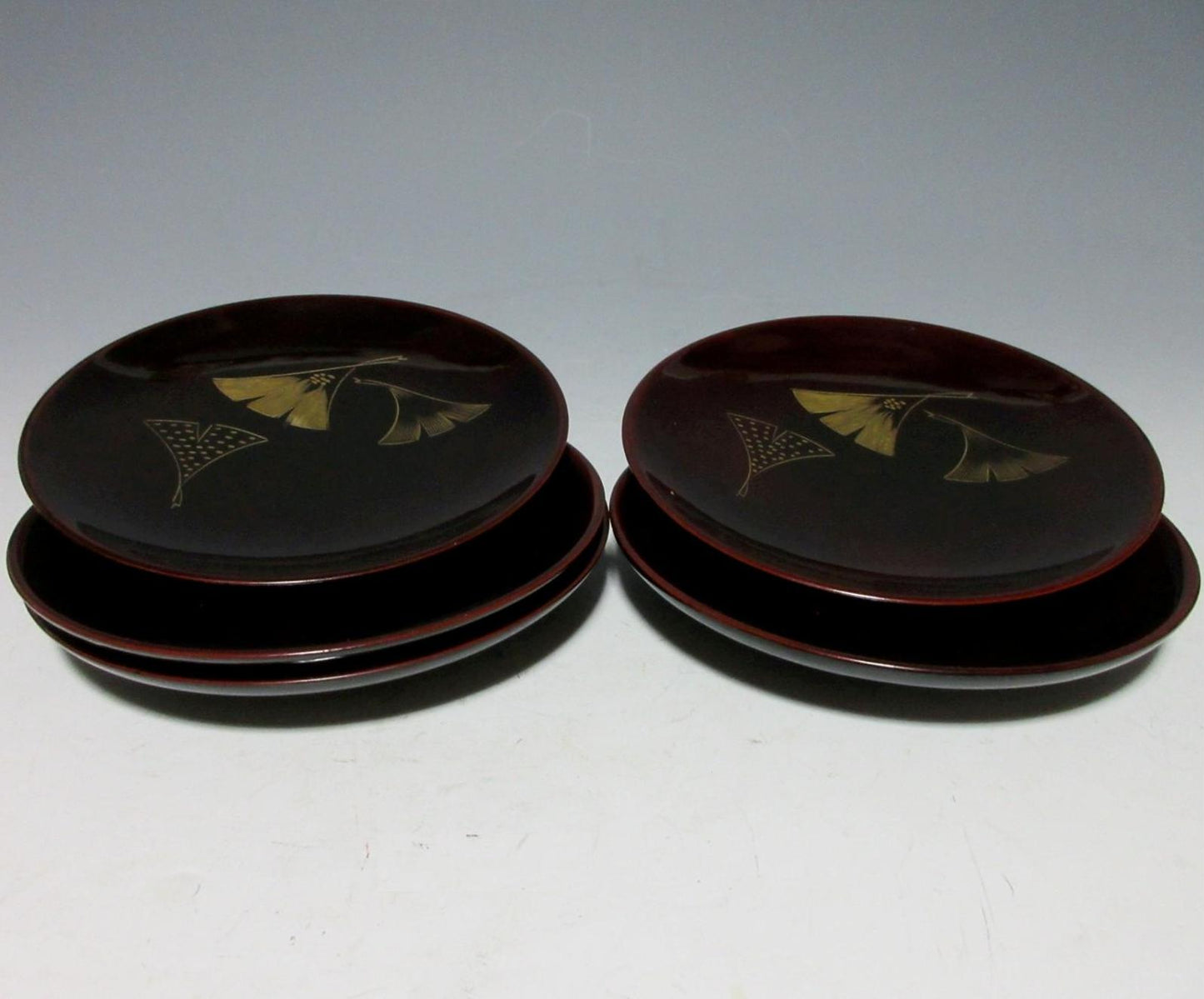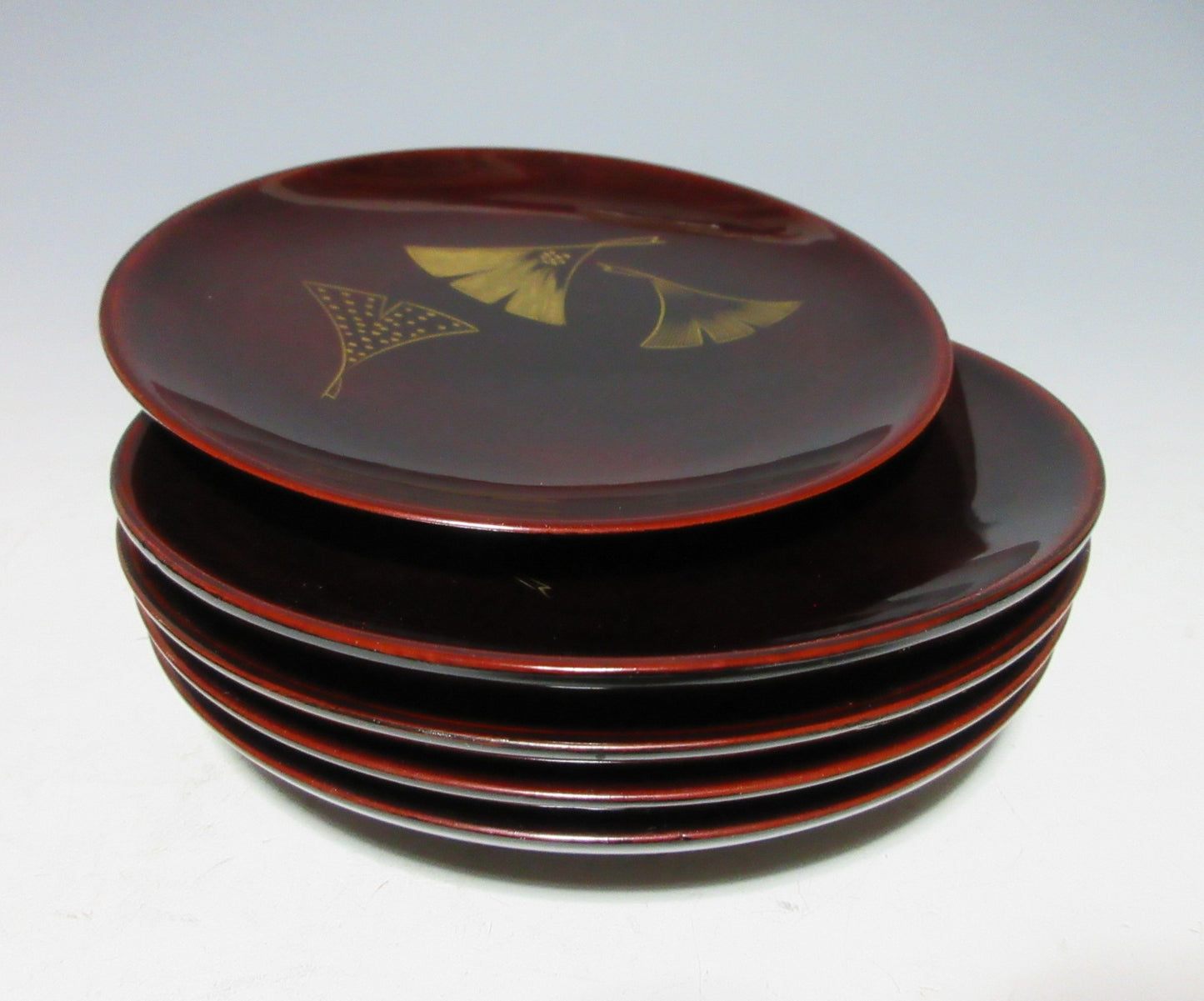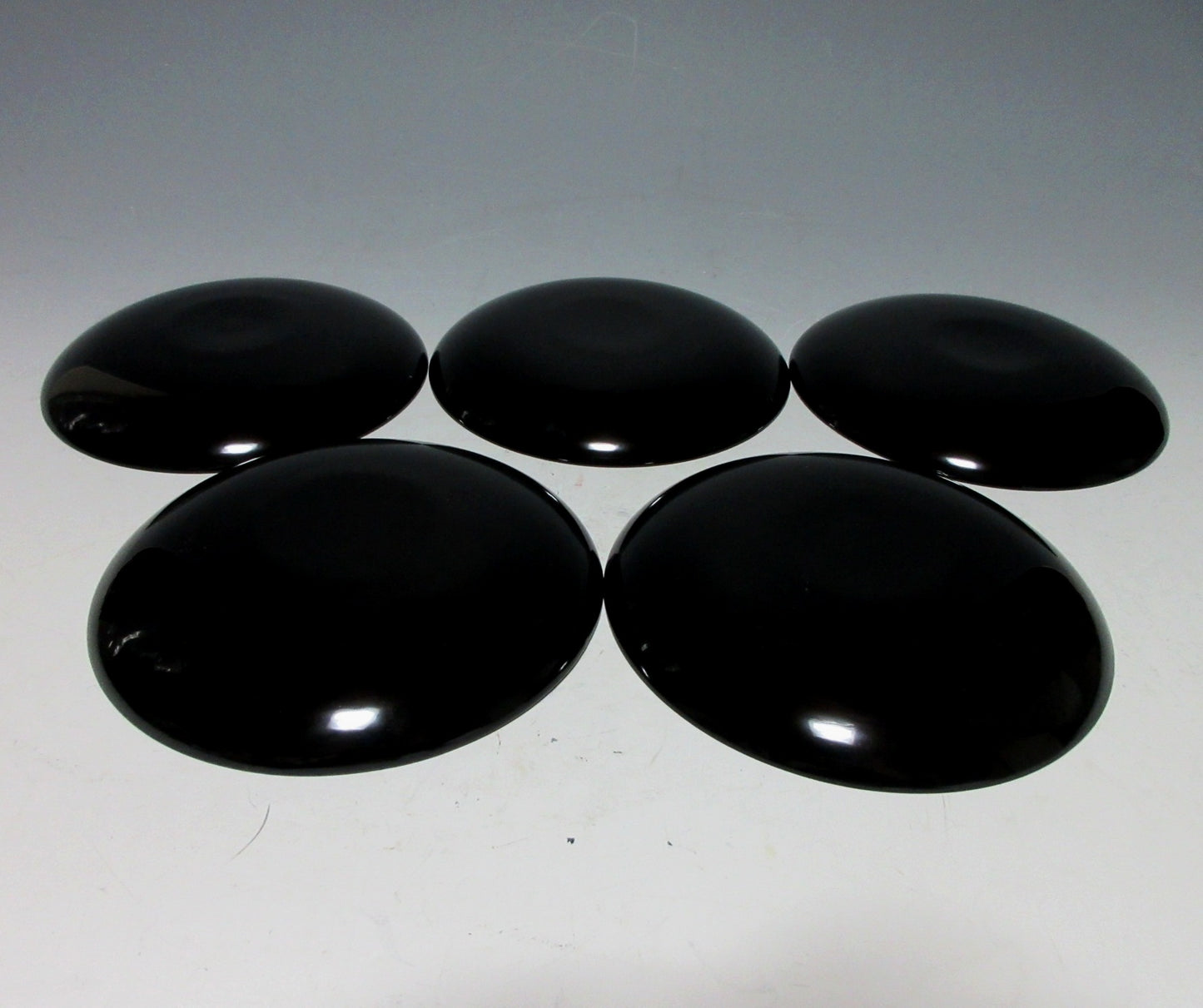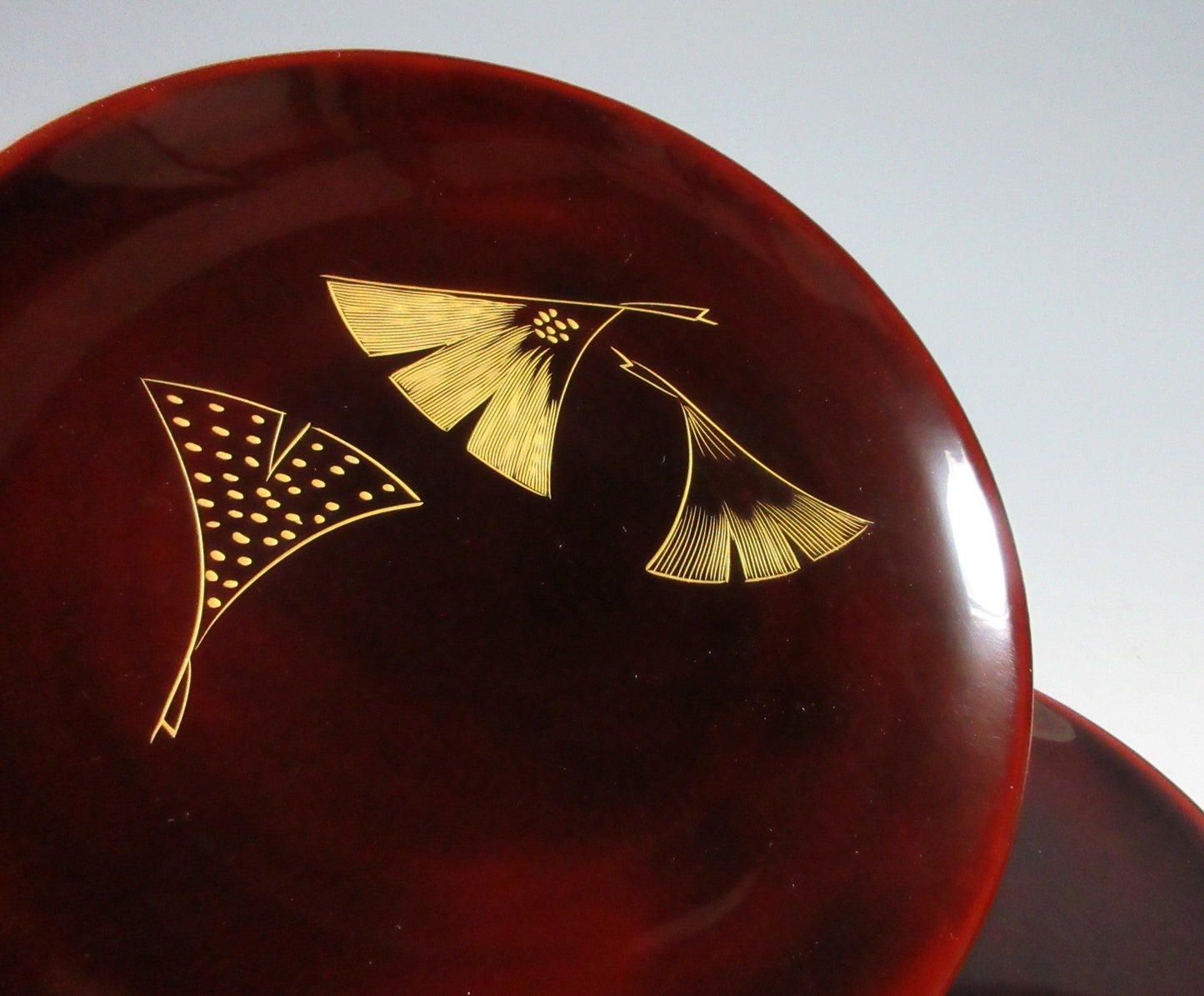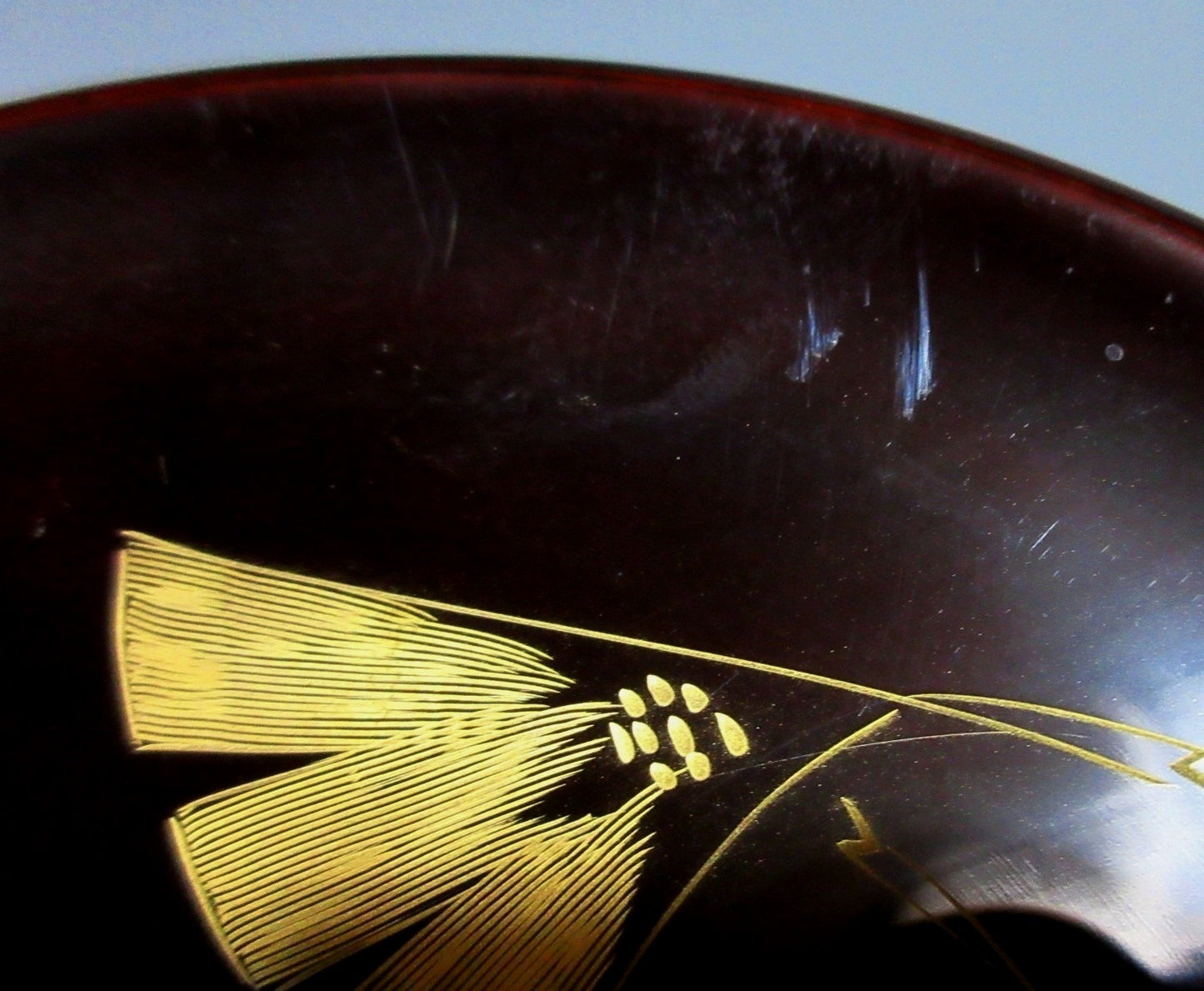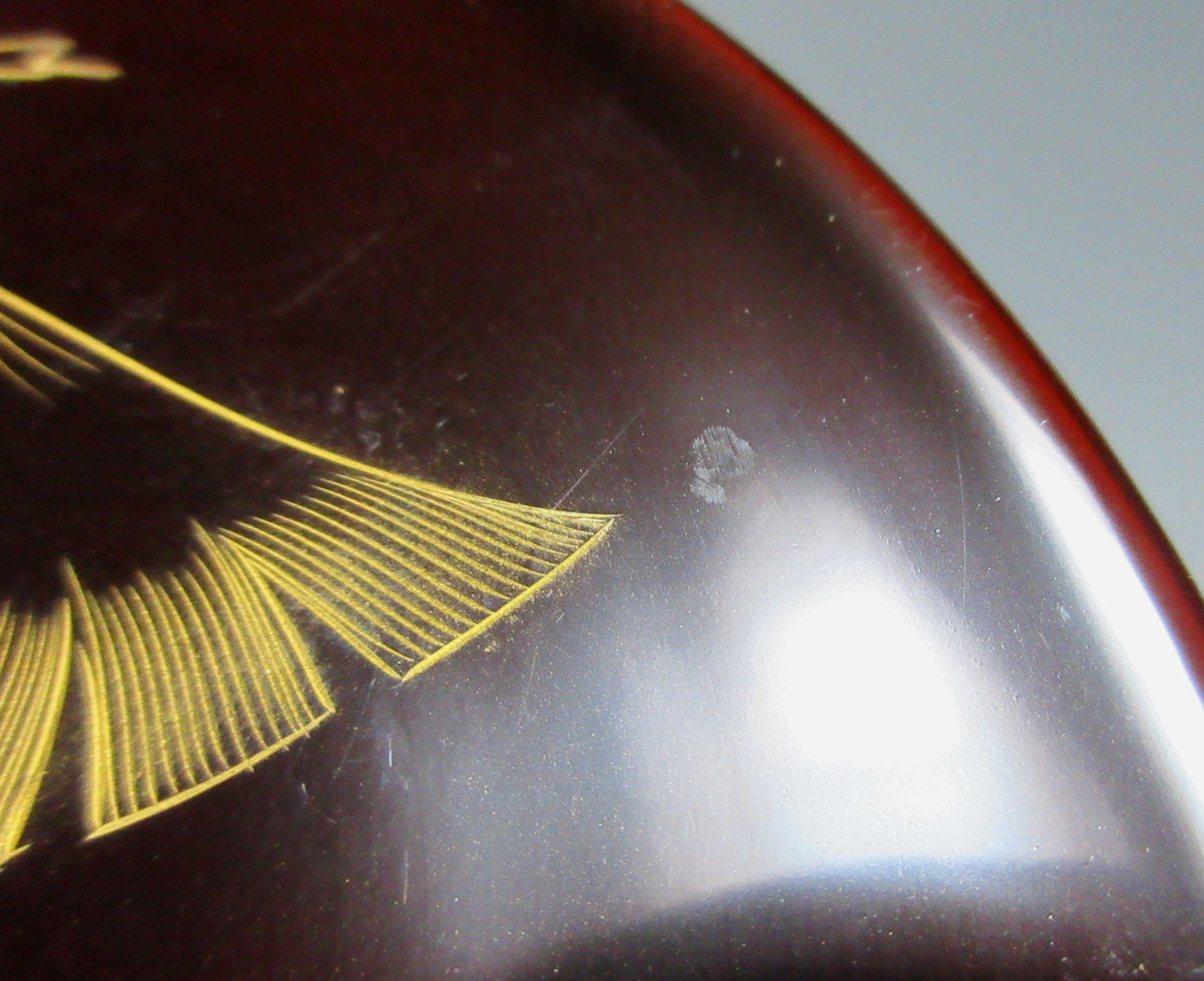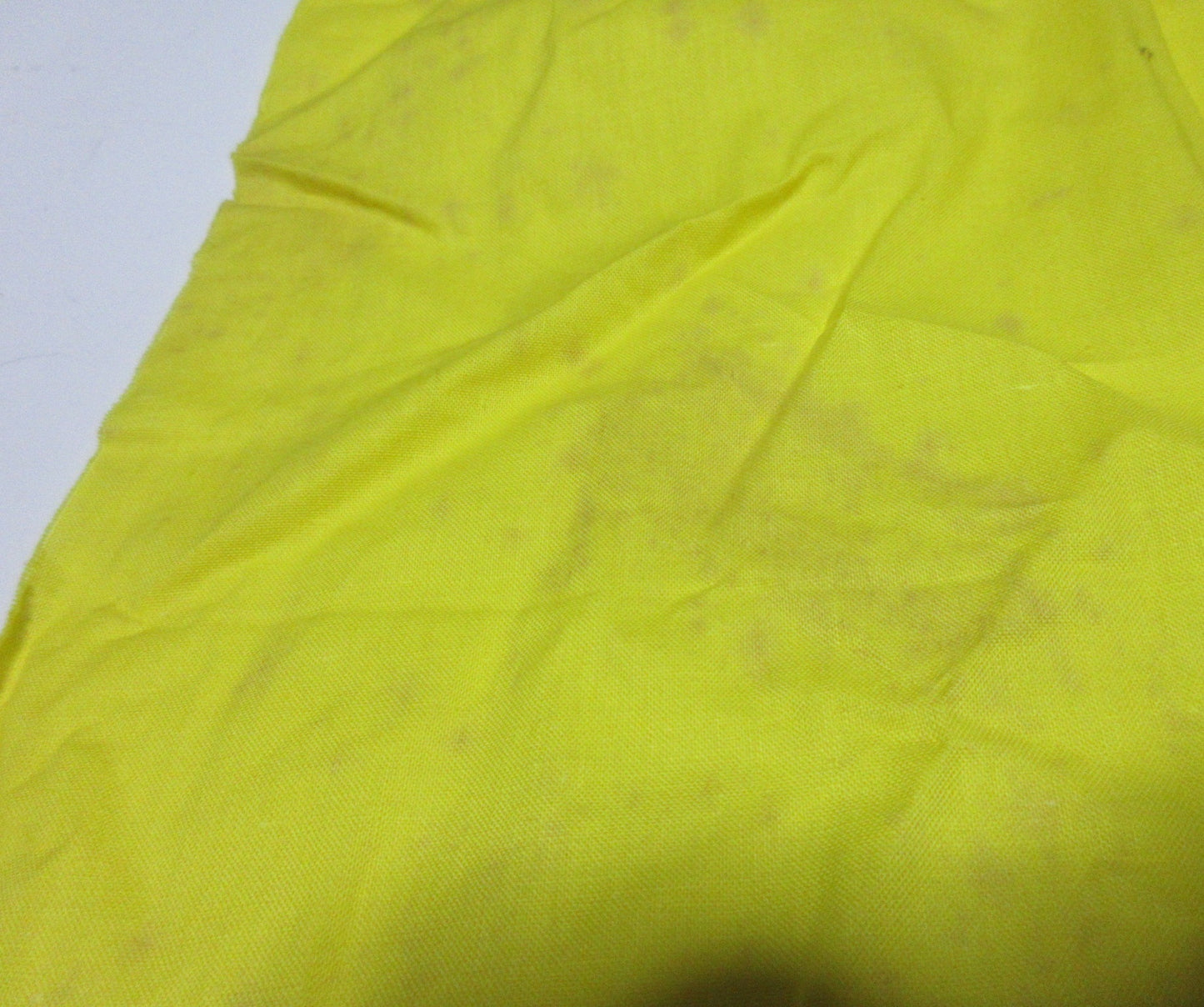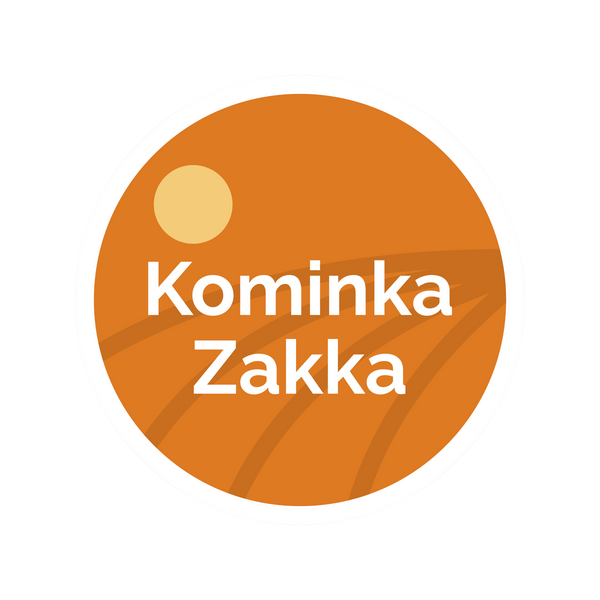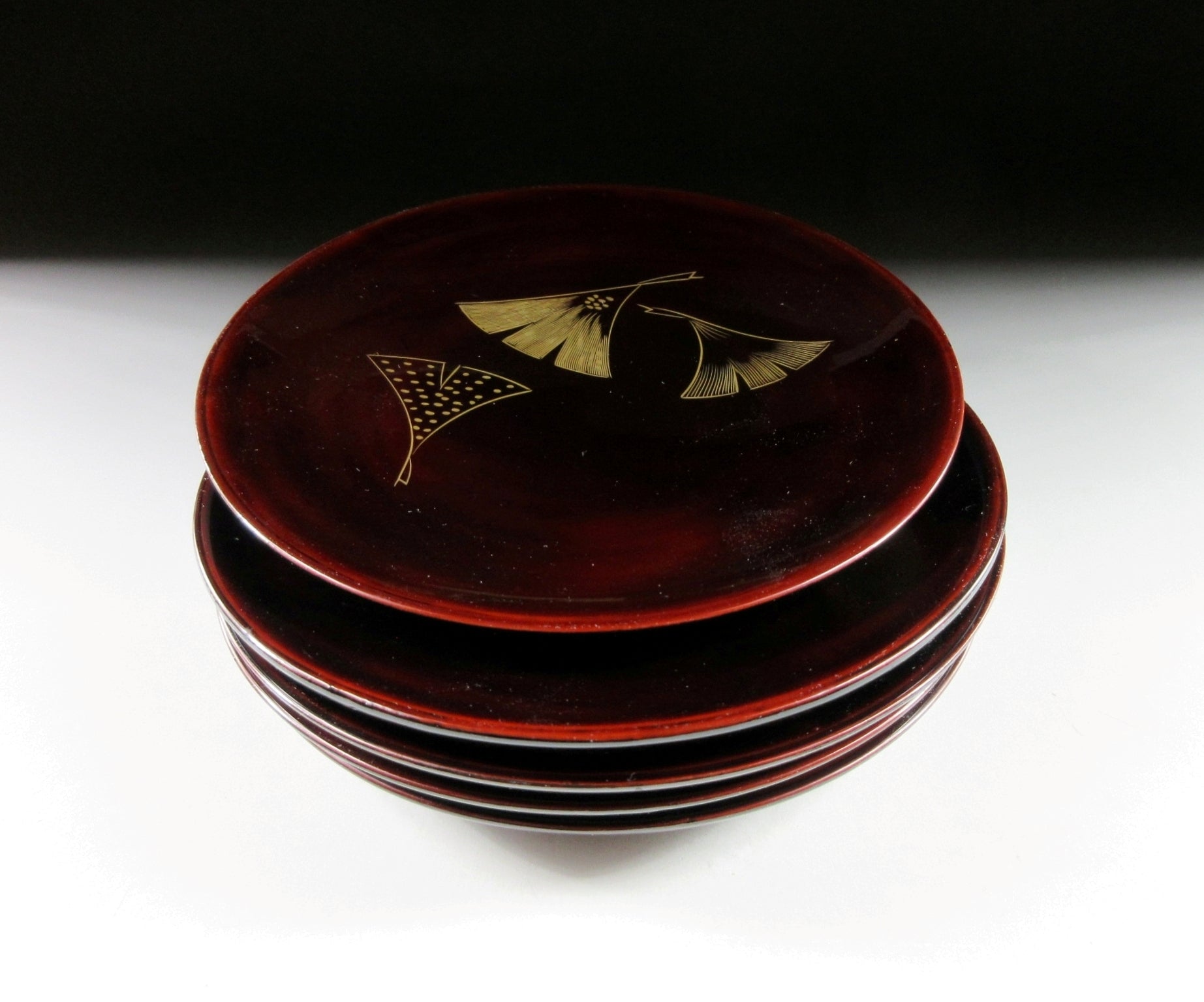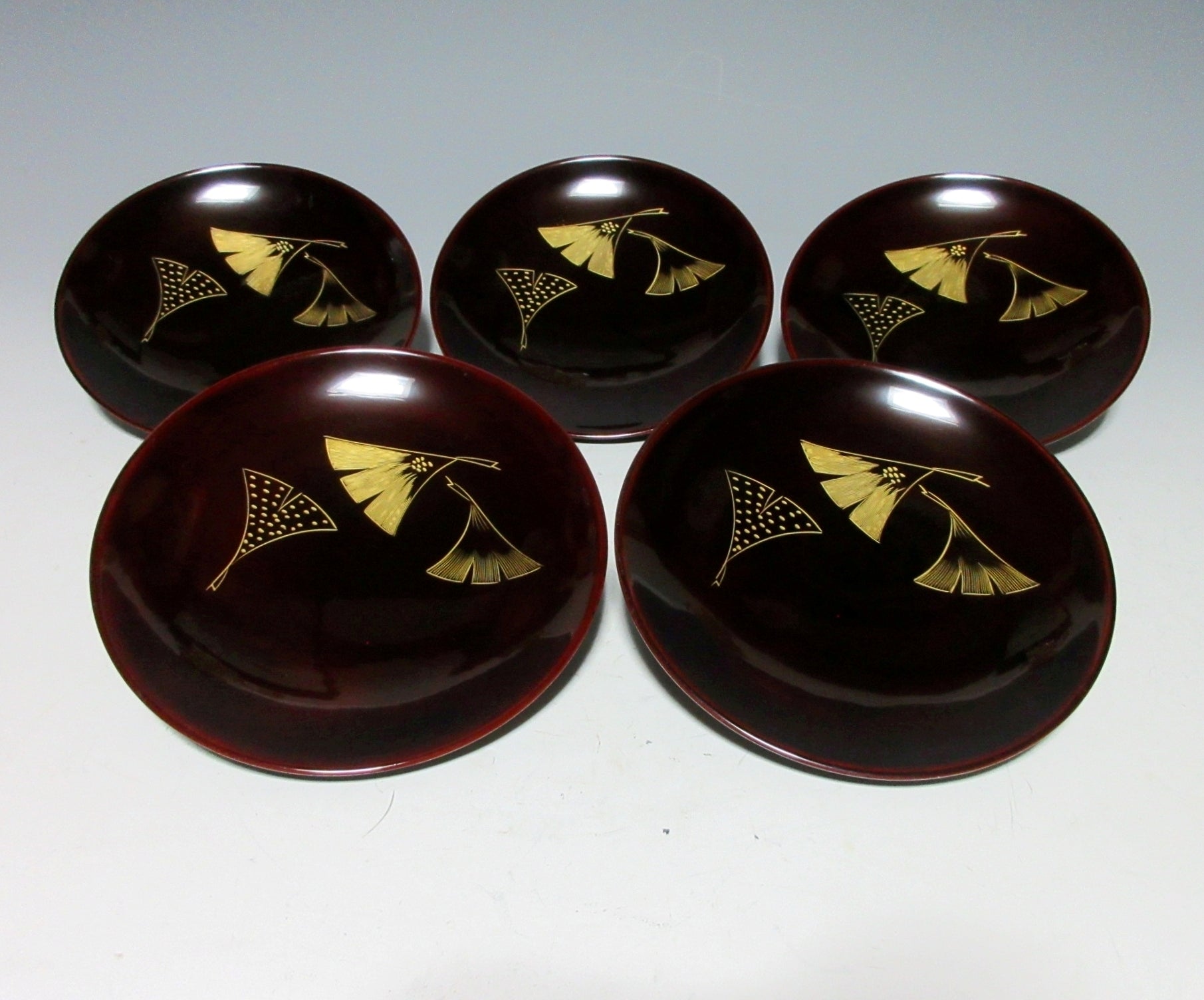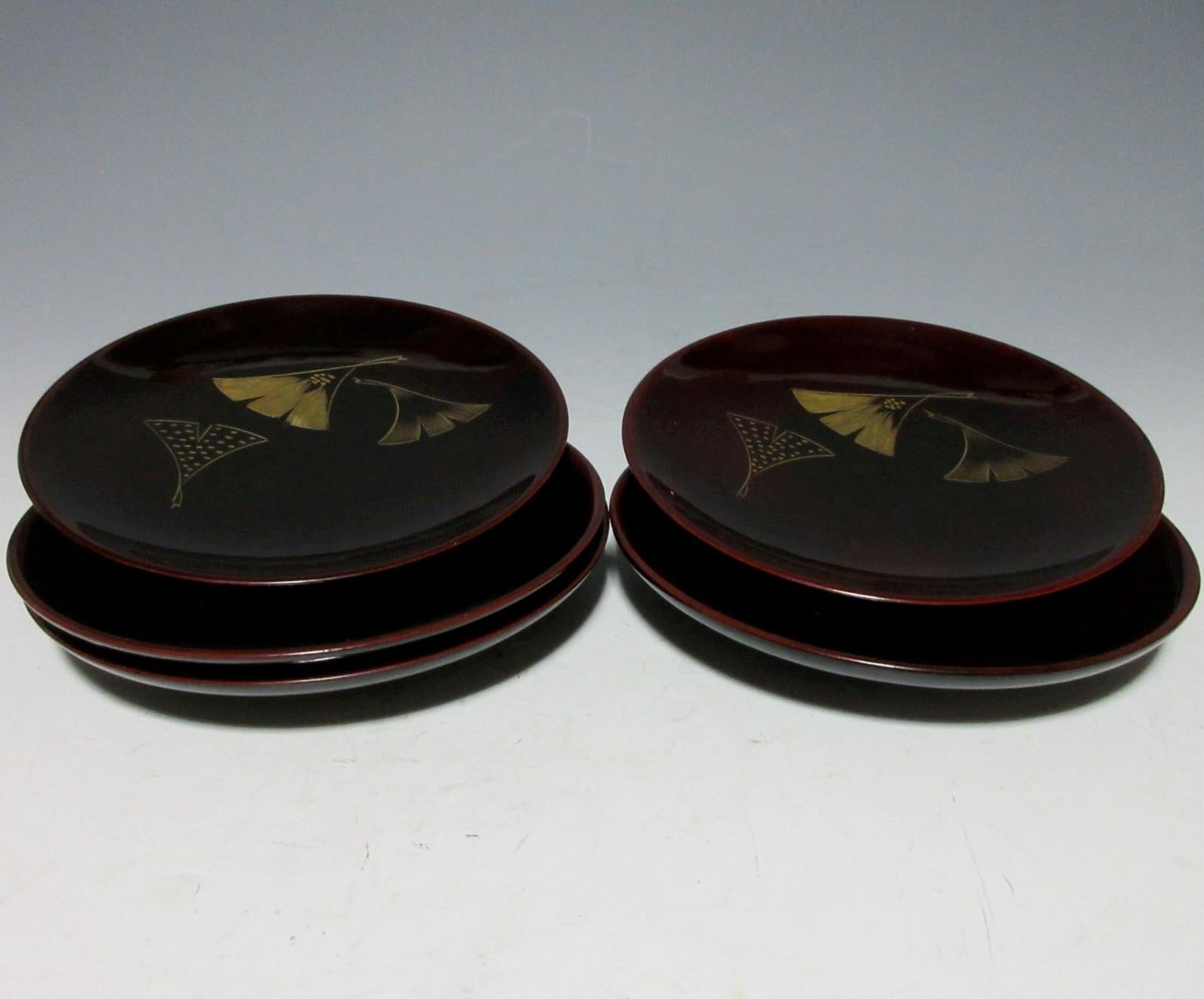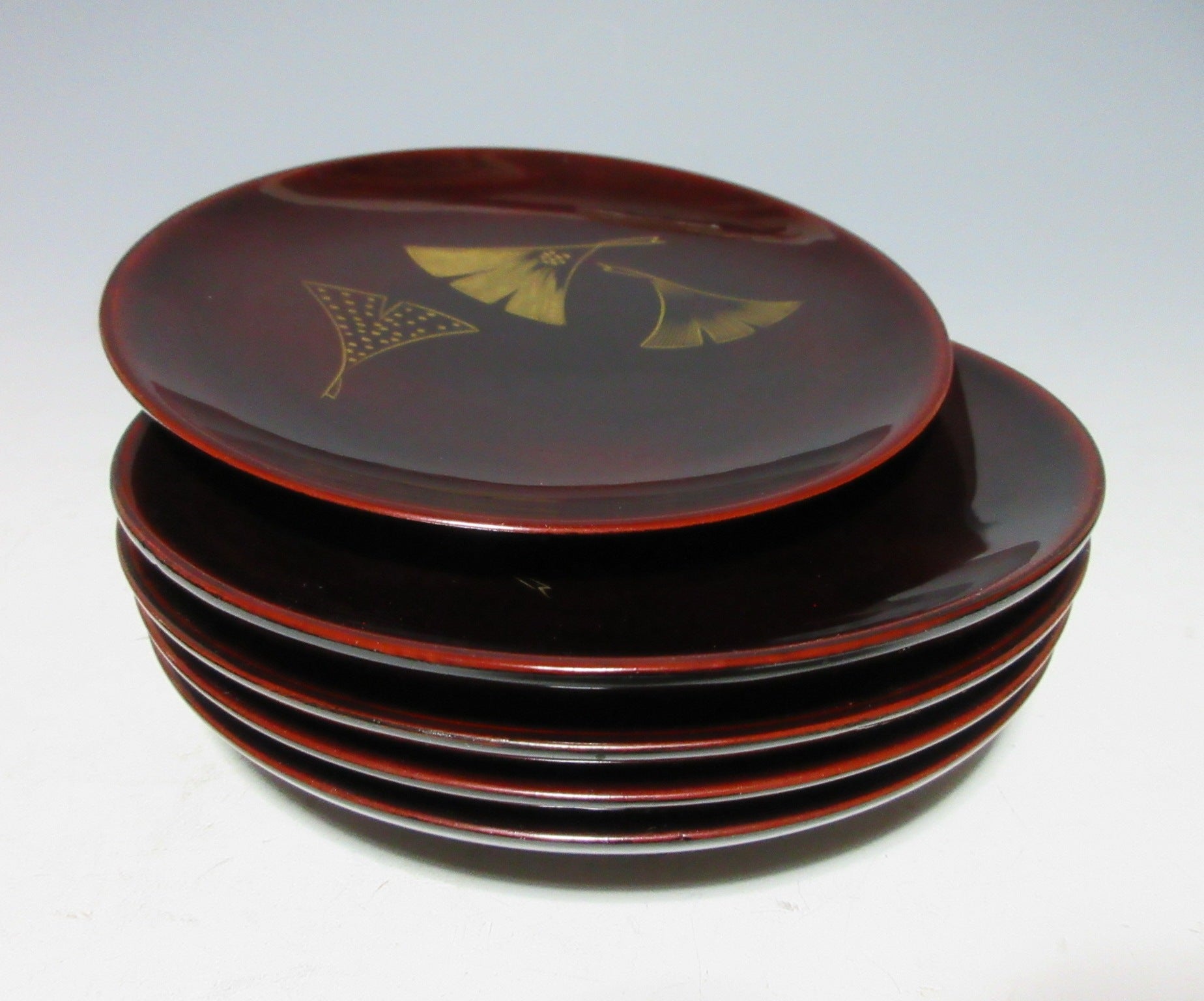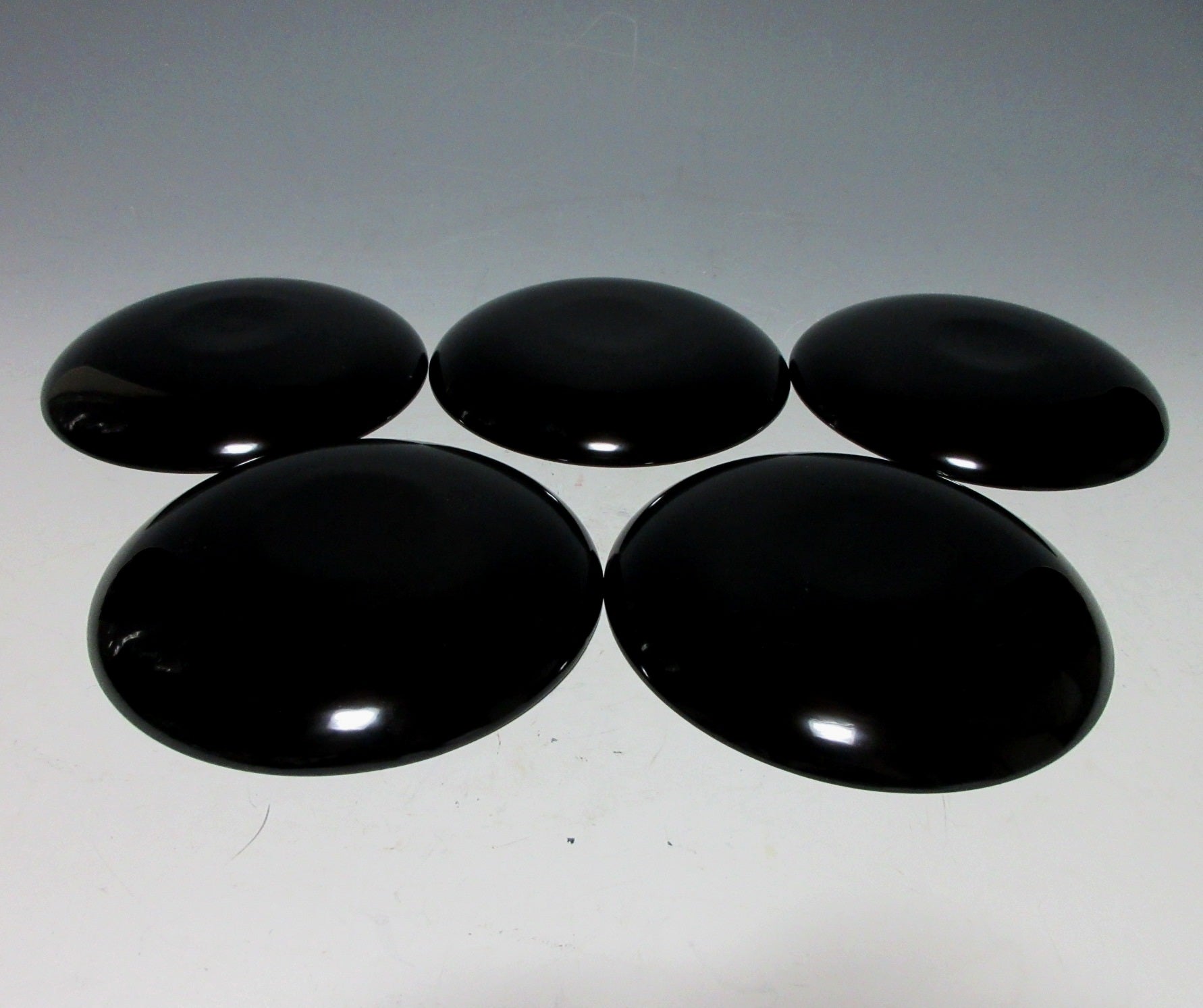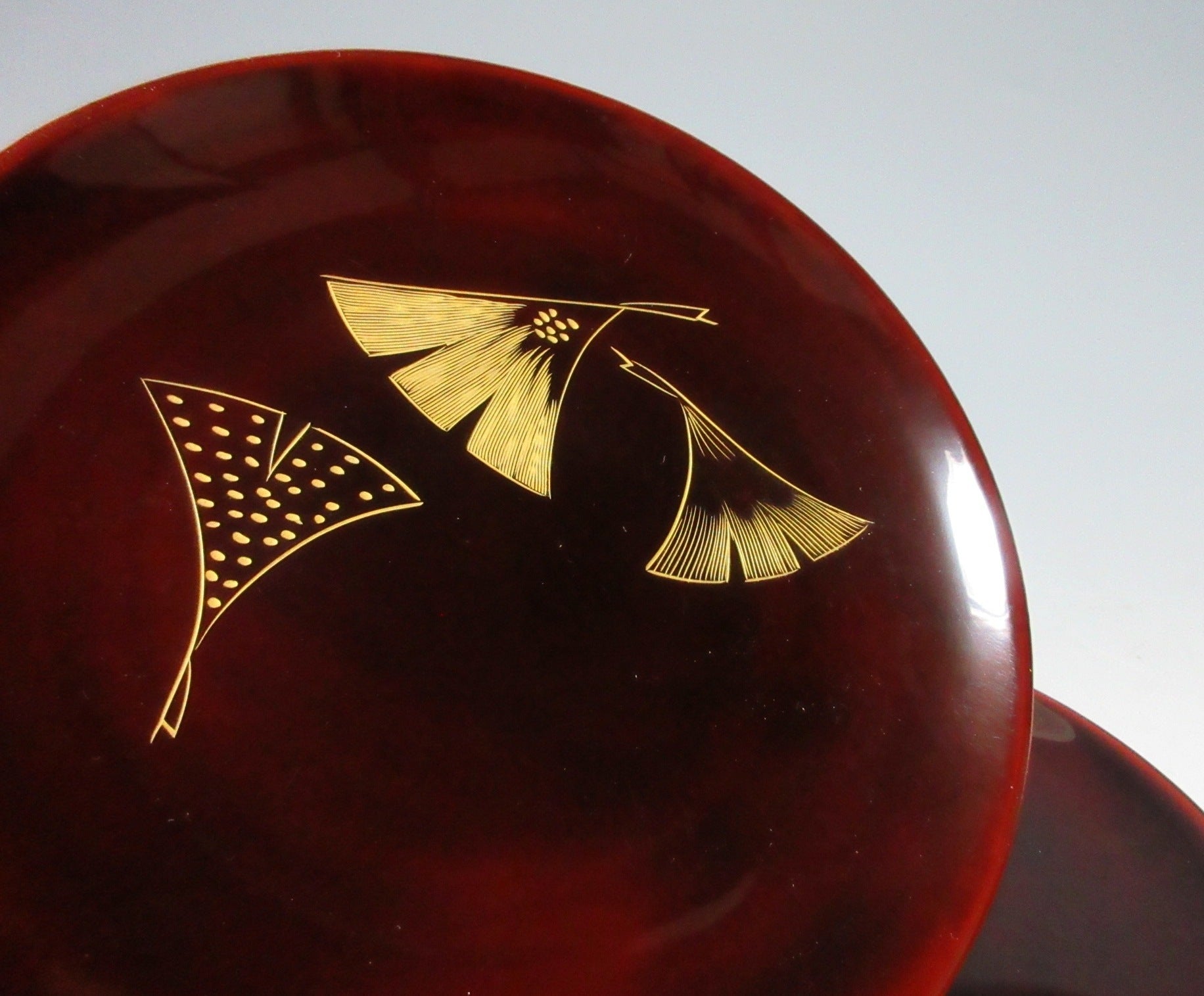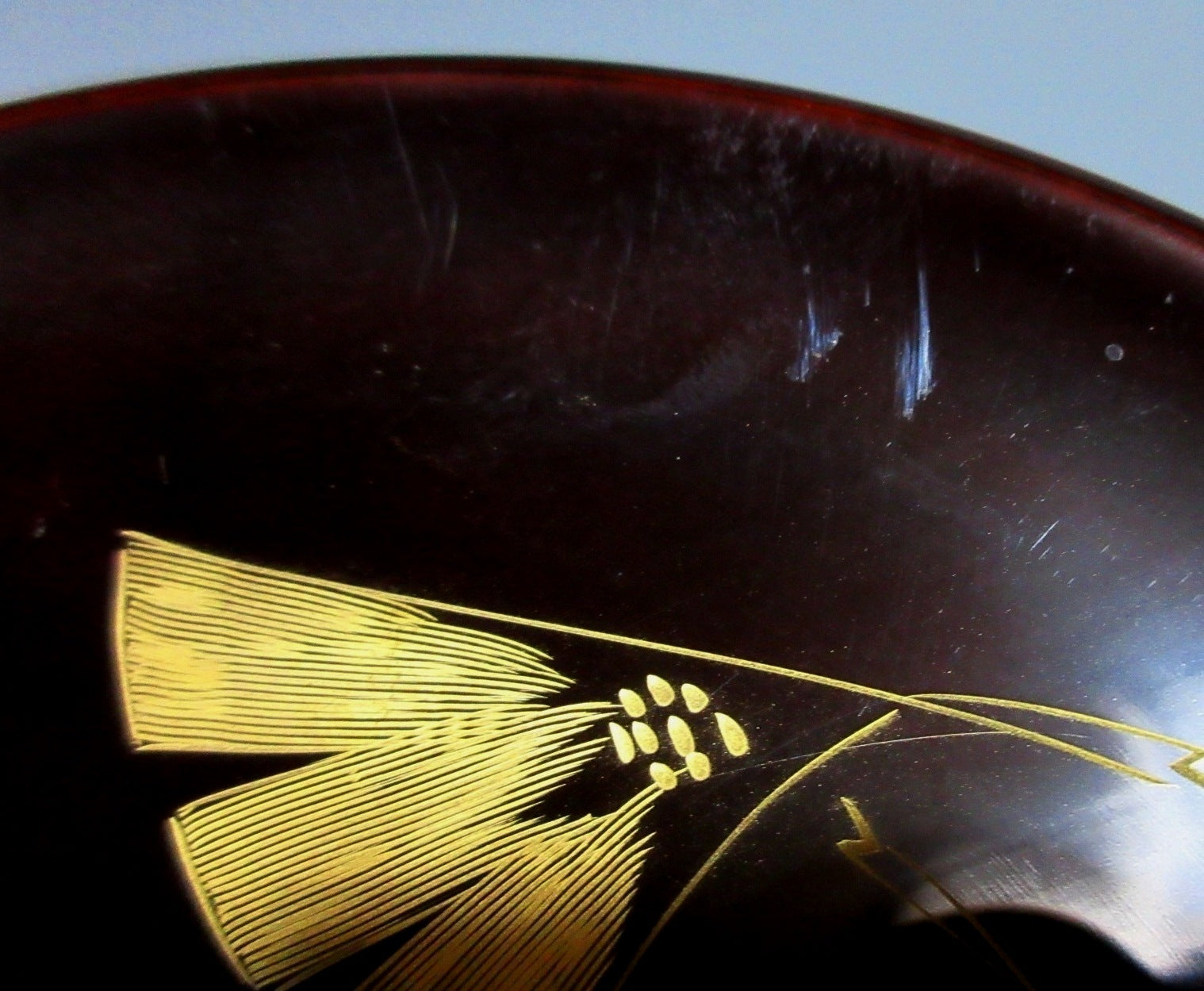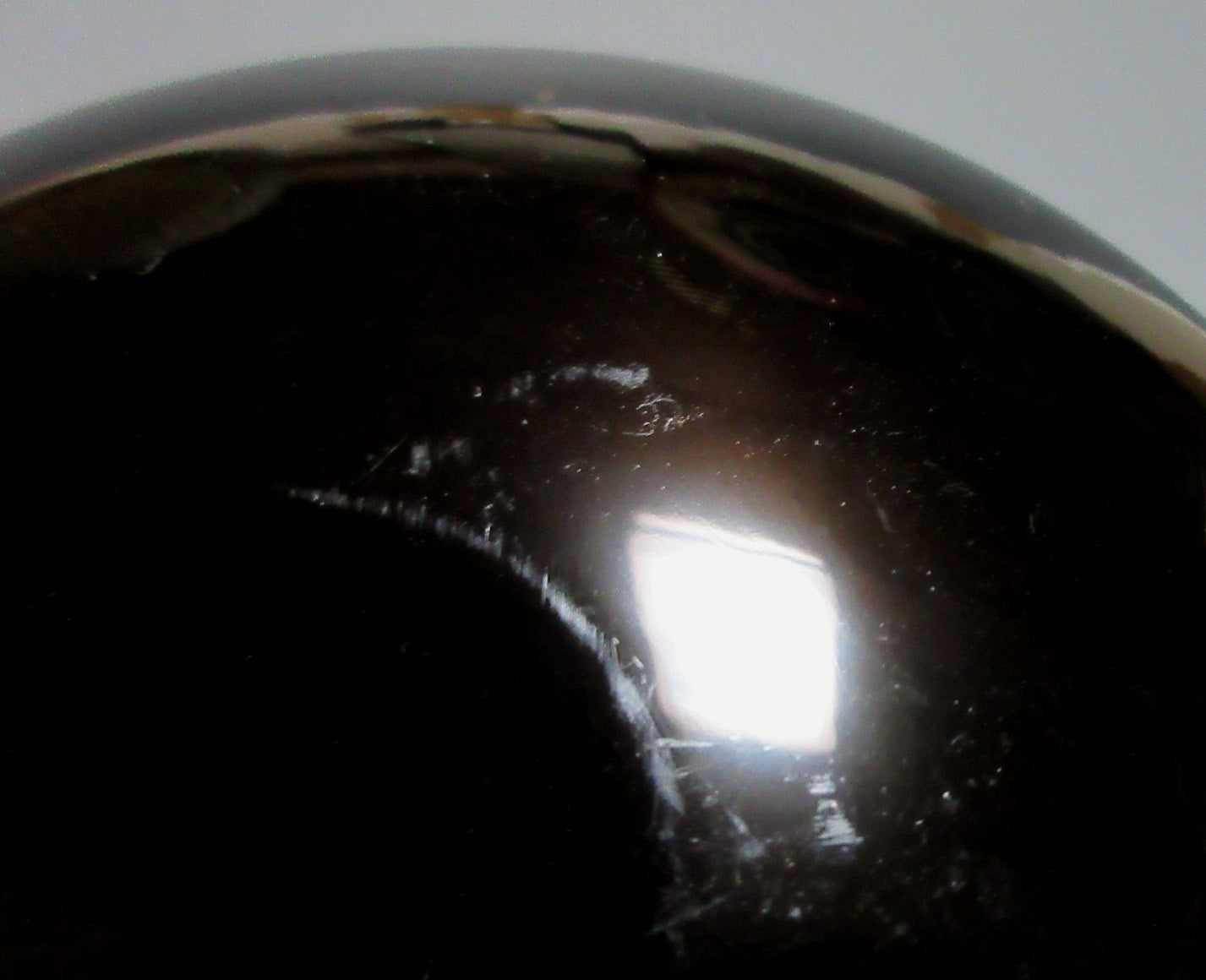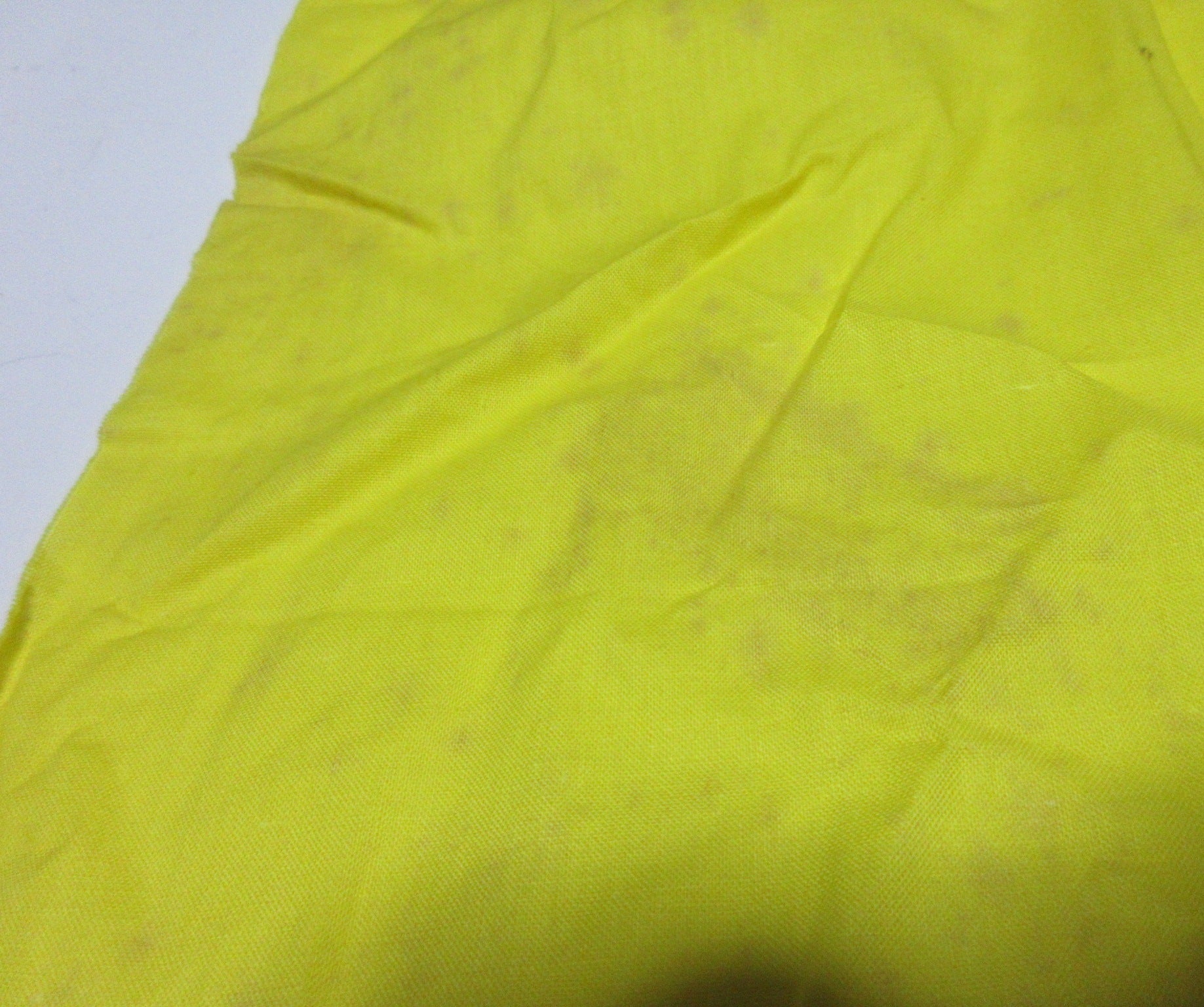Kominka Zakka
Kawatsura-nuri Lacquer Plates
Kawatsura-nuri Lacquer Plates
Couldn't load pickup availability
*SHIPPING OPTIONS VARY DEPENDING ON THE DESTINATION, PLEASE SCROLL TO THE END OF THIS LISTING FOR MORE DETAILS.
This listing is for a set of five Kawatsura-nuri lacquerware plates made around 30-40 years ago. They are made of wood and coated in brown glossy lacquer. Each plate is decorated with gold makie ginkgo leaves over a thick layer of lacquer, and they have a nice smooth finish. They come with their original wooden storage box as well as a yellow wrapping cloth for when the plates are not in use.
Kawatsura-nuri refers to lacquerware produced in Kawatsura village in the mountains of Akita Prefecture. During the 12th century, the Onodera clan ruled the southern part of Akita. The first lord of Inaniwa Castle, Onodera Shigemichi, ordered his younger brother Michinori to assemble craftsmen to produce sword scabbards, bows and armour. Michinori instructed these men to apply lacquer to the armour, thus marking the beginning of lacquer production in Kawatsura. During the 1600s, lacquer production spread and local craftsmen began producing bowls using smoke-dried wood. By the 1800s Kawatsura village became well known for producing high quality bowls, trays and multi-tiered jubako. In 1894, the Kawatsura Village Lacquerware Association was established and products were exported overseas. Six years later Kawatsura products were exhibited at the Great Paris Exhibition of 1900. In 1976 Kawatsura-nuri was certified as National Traditional Craft, and in 1998 and 2000 Kawatsura-nuri products received the Prime Ministers Award at the National Lacquerware Exhibition. These days Kawatsura products are made from broadleaf trees such as beech, horse chestnut and katsura sourced from the Ou Mountains.
Urushi lacquerware refers to products that have been coated in natural lacquer collected from urushi trees. The process for lacquering items is long and very labour intensive, each item requiring multiple layers of lacquer that may take anywhere from six months to two years to complete. Heat and humidity are required to dry lacquer evenly and consistently, so Japan’s rainy season and summer months are ideal for this process. Urushi products are not only beautiful but also strong.
Makie refers to a crafting technique in Japan from presumably the Nara period. Craftsmen sprinkle gold or silver metal powder over successive layers of lacquer before it dries. Traditionally pure gold powder, pure gold flakes, and pure silver powder were used to complete motifs on lacquerware. The process of applying gold or silver powder requires both time and skill. At first the craftsman sketches out the design. He or she then adds charcoal powder to the base of the relief, and then a layer of urushi lacquer. Gold or silver powder is sprinkled over the wet lacquer, which acts as an adhesive. The surface is polished and then the process is repeated over and over until a beautiful raised pattern appears.
Sizes
Box: H.7.5cm (2.9”) x 17.9cm (7”) x 17.9cm (7”)
Plates: H.1.9cm (0.7”) x Dia.15.2cm (5.9”)
Condition
They’re in very good condition aside from some minor surface wear such as light scratches, and scuffing on the bottom. Also there are some minor borer holes on the interior of the box, and the yellow wrapping cloth is spotty.
THESE ARE SHIPPING ESTIMATES BASED ON THE CURRENT GLOBAL SITUATION
**Germany, France, Greece, Spain, Poland, Austria, Slovakia, Lithuania, Slovenia: NO SHIPPING. Very strict and expensive packaging laws in place and we are not licensed to send products to these countries. We have no plan to register at this time because the process is in some cases very expensive and complicated, plus each country has its own set of regulations and application process.
**USA, UK, Canada, Australia, New Zealand, Switzerland, Norway: Airmail Small Packet (approx. 15-28 days). Combined shipping available up to 2kgs for Airmail Small Packet (please send us a message).
**Asia: Airmail Small Packet (approx. 15-21 days). Combined shipping available up to 2kgs for Airmail Small Packet (please send us a message).
**Central Asia, Middle East, South Africa, Brazil, Mexico: EMS Express 10-15 days.
**Russia: No shipping methods available.
Share
